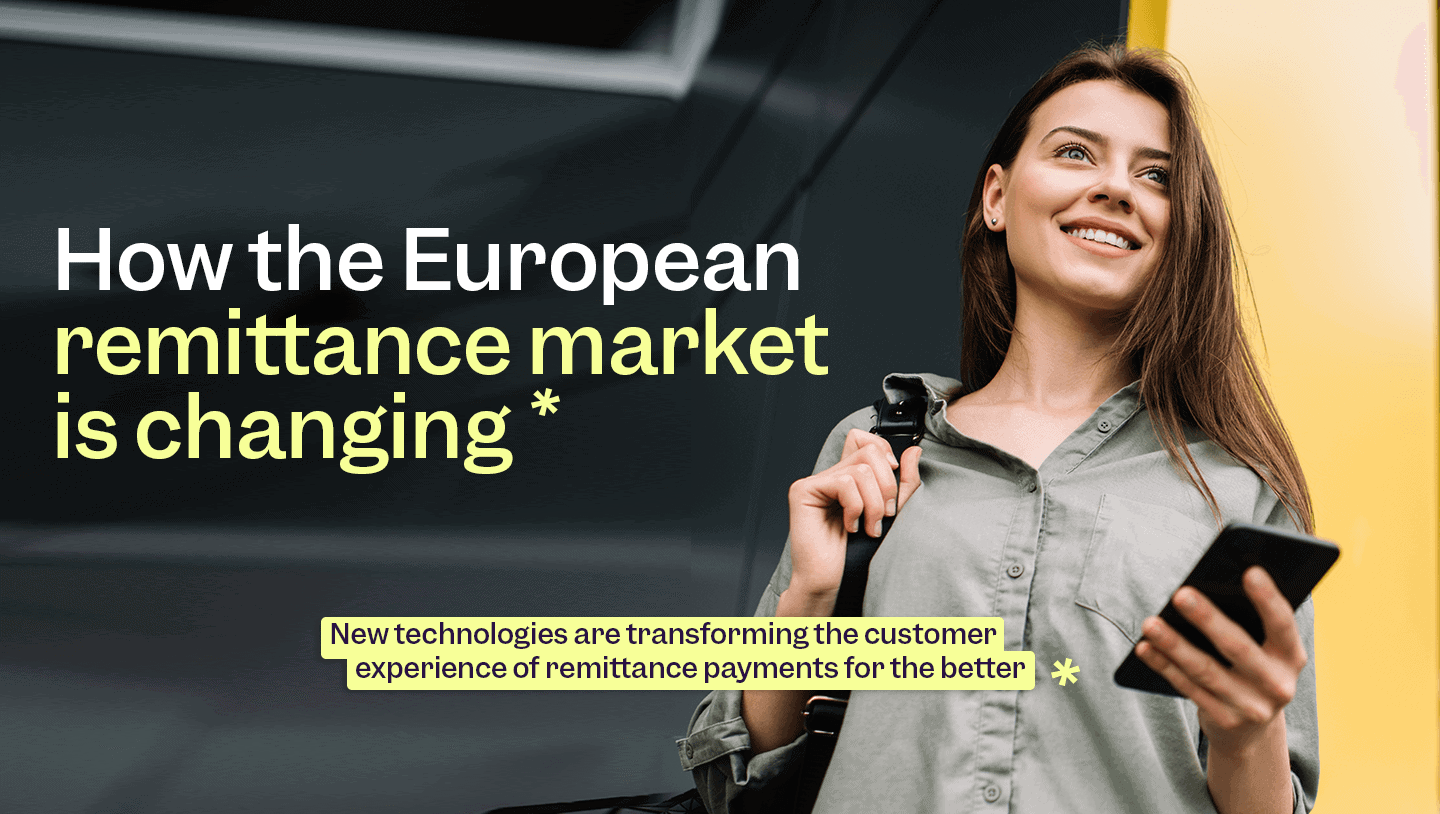
The European remittance market has entered a fresh era. New technologies are transforming the customer experience of remittance payments for the better.
Previously, senders had to stand in line to make payments and receivers waited for days before they would arrive. Today, innovative service providers can now deliver remittance payments instantly via mobile devices. However, this customer-centric transformation requires remittance payment providers to be open to adopting new technologies.
This article will explore the shifting landscape of the European remittance market, examining its past, present and future, and uncovering new ways to improve payment services via remittance in banking.
Past: The problems of the traditional model of remittance payments
Until relatively recently, remittance payments largely depended on the traditional banking model. This involved visiting the branch of a local remittance provider, so senders could wire funds to another country. However, this style of remittance payments created several pain points for customers:
1. Long wait times and poor availability
The remittance process was once time-consuming and tedious since senders had to rely on their branch’s open hours. Similarly, legacy payment rails, like card or wire transfers, meant that payments could take several days to reach a recipient.
With 75% of remittance payments used to cover daily necessities (like food, medical, school, or housing expenses), senders often had to visit local branches frequently. Unfortunately, this meant experiencing the same complications each and every time.
2. Limited payment options
Migrant workers often lack access to credit, meaning their payment options are limited when trying to send money across borders. Given that remittances grew by 5% in 2022, it’s critical that remittance providers make the process more simple and more accessible.
3. High fees
UN data suggests that, globally, migrant workers typically remit €150-250 (around 15% of their wages) each month. Sending smaller amounts more often can mean recipients are disproportionately affected by processing fees, which amount to ~6% of the total transfer amount. As a result, friends and family back home received less money than they ideally should if these costs were eliminated.
4. Unreliable transfers
As cross-border transactions, senders would frequently face issues with their remittance payments. Whether from insufficient funds, data entry errors, or missing transaction data, payments would be flagged as fraudulent or sometimes even lost entirely. In turn, senders would have to restart the remittance, incurring the same high fees and wait times all over again.
Present: How digital banking is changing the European remittance market
It’s no wonder customers have flocked to digital solutions. The speed, efficiency, and convenience of mobile apps mean they stand in stark contrast to the traditional model of remittance payments.
The pandemic was also a significant driver of digital solutions. Data from Visa shows that 75% more people turned to digital remittance apps in 2020. The biggest remittance players in particular saw a 52% rise in YoY downloads. Within Europe specifically, McKinsey research showed the number of digital banking users increased by 23% during this same period.
Remittance providers have also benefited from the change. Firms that have adopted open banking technology have eliminated intermediary fees from various third parties. Similarly, providers that have adopted a mobile-first remittance service model have been able to lower their transfer costs by as much as 44% compared to the global average.
In turn, innovative remittance providers have been able to pass on savings to consumers and increase the speed and security of their service. Combined, this has helped the EU’s cross-border remittance market size grow to around €25 billion in 2021.
Future: How to improve your remittance payment service even further
Increase your adoption of open banking technologies
Open banking-enabled payments are the future of the European remittance market. However, remittance firms need to first identify reliable partners that have the best platform in place for offering instant payments.
Here, Brite Payments can offer a solution. We’ve been at the heart of driving positive change in how companies get paid and pay out since 2019. Brite Instant Payments delivers lightning-fast transactions without the traditionally higher cost of card payments. Remittance payments flow directly from one bank account to another, and our bank-level security means that payments always arrive safely.
Brite Instant Payouts can also help remittance recipients. Our platform shows customers exactly when their remittance funds will arrive in customer accounts, meaning you can build trust with your customers more effectively.
What’s more, we’ve designed Brite with no downloads or registration required. So, customers can action remittance payments easily, and without having to fuss over credit card or login details. On top, there is no need to enter bank account details manually, preventing input errors in the payout flow.
Adopt a regional strategy customer acquisition strategy
The European remittance market is concentrated around a few key member states. Eurostat data shows that money flows mirror migration patterns. For example, Croatia, Latvia and Romania received the most remittances in 2021. Similarly, Switzerland was the main remittance provider during the same year.
Other key EU remittance markets (where most migrants are from other EU countries) include Luxembourg, Liechtenstein, Belgium, Austria and the Netherlands. Here too, Brite Payments offers a solution. We can deliver instant payments in six countries (Sweden, Finland, the Netherlands, Estonia, Latvia, Lithuania and soon Belgium), allowing you to target critical remittance markets within the EU more effectively. You can learn more about how to adopt a regional customer acquisition strategy in our dedicated article.
Get ahead in the European remittance market with Brite
The long-term and high-value nature of remittance payments means they matter a lot to customers. Hence, they demand fast, safe and convenient solutions in return. That’s why only open banking-based Instant Payments can help remittance firms meet these expectations.
Instant Payouts provided by Brite, offer a simple way to deliver quick, transparent and reliable remittance payments at scale. So, if you have a remittance business and want to improve your services, let’s talk.
